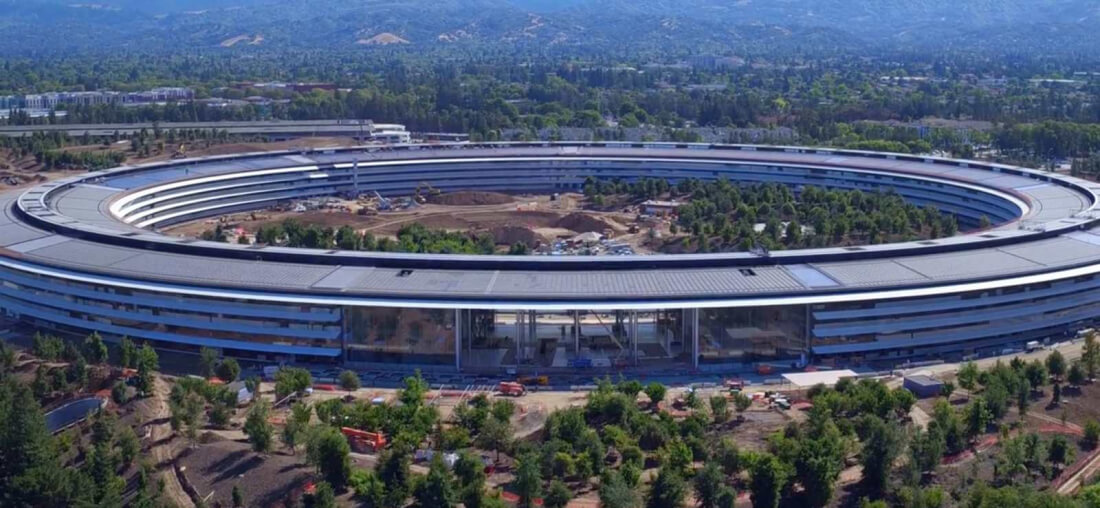
Apple’s massive circular “spaceship” campus is quite a sight to see. Officially dubbed “Apple Park”, the facility will serve as Apple’s future headquarters. The structure is 2.8 million square feet housed within four stories, it sits on 175 acres of land. If you have not seen it close up, there are plenty of drone videos on YouTube showcasing the building and its construction progress, but enjoy them while you can. Flyovers might not be permitted anymore.
According to one drone pilot (video below), Apple has specifically hired security to spot drones and remove the pilots from the area. If the pilots refuse to leave, security will call the police to have them "forcibly removed." Apple has essentially declared its airspace a no-fly zone.
However, Apple Park is not listed by the FAA as a no-fly area. In fact, Apple Insider reports that it could not even find any “Controlled Airspace” filings with the FAA for Apple Park or any filed by the company. It just appears that Apple has made the declaration on its own authority, but is that even legal? Can’t drone pilots just ignore Apple security since it does not have the power to make and enforce such a restriction?
Well, the situation is a bit trickier than that. Current FAA regulations limit drone altitude to 400 feet. At four stories, a fly over of Apple Park should not be a problem. At an average floor to ceiling height of 10 feet, Apple Park should only be around 50 feet high accounting for extras. Even if its floors are a bit taller than average, there should still be room for a fly over.
There is a technicality though. Another FAA regulation states that drones must maintain a distance of 360 feet from structures. Therefore to fly over Apple Park, a drone would have to climb to a minimum altitude of approximately 400 feet, which is cutting it close to breaking regulations. If the building is taller about 50 feet, then pilots would either have to break altitude limitation or fly within the 360-foot restriction.
Even if some loophole around these FAA regs exists, Apple can still take legal action due to case law (1946, US v Causby), which established that landowners are entitled to ownership of the airspace 365 feet above their property. So essentially a drone passing over the facility is trespassing. Apple is well-known for its secrecy, but restricting public airspace seems above the norm, especially on a project where there is no reasonable concern for secrecy.
So far no legal actions from Apple or private pilots have been taken, but it will be interesting to see how it plays out. The company has so far been successful at throwing its weight around in that it has not received any push back from pilots. However, if it wants to do this the right way, it should just file for controlled airspace status on the grounds that drones cannot fly over the facility without breaking FAA rules. That way pilots will know that the airspace is restricted, and Apple will not come off as being a bully.
https://www.techspot.com/news/70185-apple-has-declared-airspace-above-new-campus-no.html